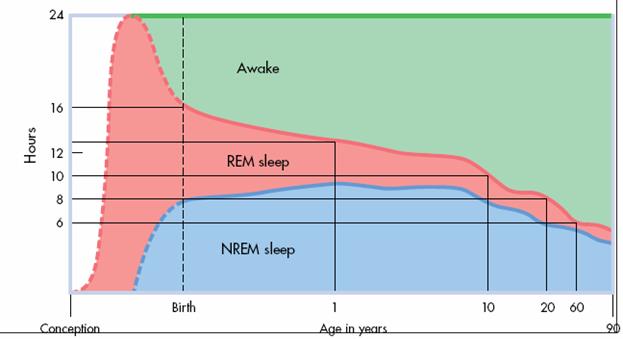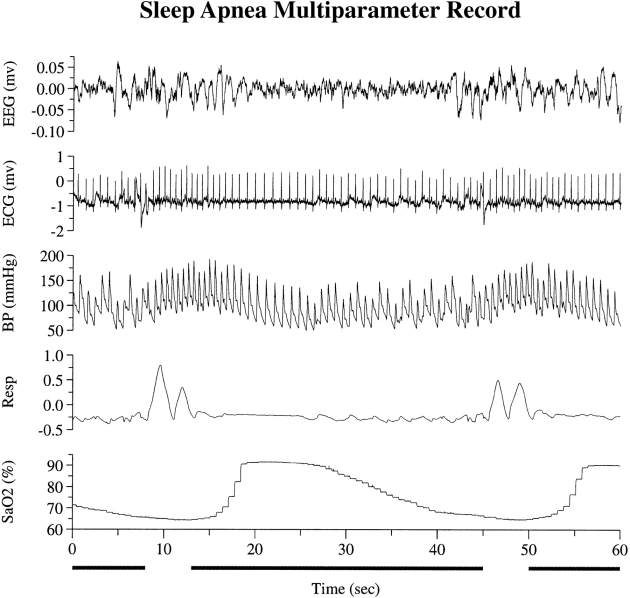Effects of Maturity on REM sleep: REM sleep in 10 week premature infants can account for 80% of sleep; At 2-4 weeks of prematurity - 65% REM sleep. REM sleep falls to 30-35% of the sleeping time by the age of 2 At the age of 10, REM sleep accounts for 25% of sleep, and in adults the % falls to 20%. The amount of time spent sleeping decreases with age in the adult
|
 * * |
|
Effects of Sleep Deprivation Stage 4 slow wave sleep and REM sleep behave differently following a period of sleep deprivation: Deprivation of Slow Wave Sleep Stage 4 architecture is markedly affected by the amount of previous sleep deprivation : if there has been sleep deprivation (deprivation of slow wave sleep), then stage 4 sleep increases - the subject sleeps for long periods, and attempts to make up the backlog. At the same time the percentage of REM sleep that occurs in sleep-deprived subjects is much reduced. |
|
|
Effects of Drugs on Sleep Architecture Hypnotic drugs generally cause: –A decrease in the latency to onset of sleep (time to fall asleep) –The duration of stage 2 sleep is increased –The duration of stage 4 sleep is decreased. –The duration of REM sleep is decreased This raises the question as to whether hypnotics actually produce a ‘good’ deep sleep.
|
 * * |
|
Deprivation of REM sleep Top There are various methods of curtailing REM sleep without interference with stage 4 sleep and it is clear thata major deprivation of REM sleep can occur without gross behavioural changes. However there may be an increased anxiety and irritability. Deprivation of REM sleep causes a rebound effect - an excessive increase in REM sleep after the period of deprivation. Despite the reduction in slow wave sleep, hypnotics do not produce changes in the secretion of adrenal or pituitary hormones. |
|
|
Sleep apnoea is a failure to take a breath (apnoea) because of either a failure of the central neural mechanisms controlling the respiratory muscles, or an obstruction to the respiratory tract causing a failure of air entry into the lungs. Apnoea causes sudden arousal shown by the EEG recordings, and can occur at ~ 500 times a night. Note the slow breathing and the EEG that follows each breath. Sleep Apnoea is common in the elderly, but can occur in all age groups. Slow wave sleep may be absent, largely because repeated episdoes of apnoea gives rise to arousal in the EEG. |
|
|
Top
Narcolepsy consists of irresistible sleep attacks lasting 5-30 minutes during the day. Sleep onset is accompanied by a loss of muscle tone generally, followed quickly by REM sleep. The onset of REM is immediate, and lasts about 10-20 minutes. These naps are accompanied by vivid dreams. |
|



